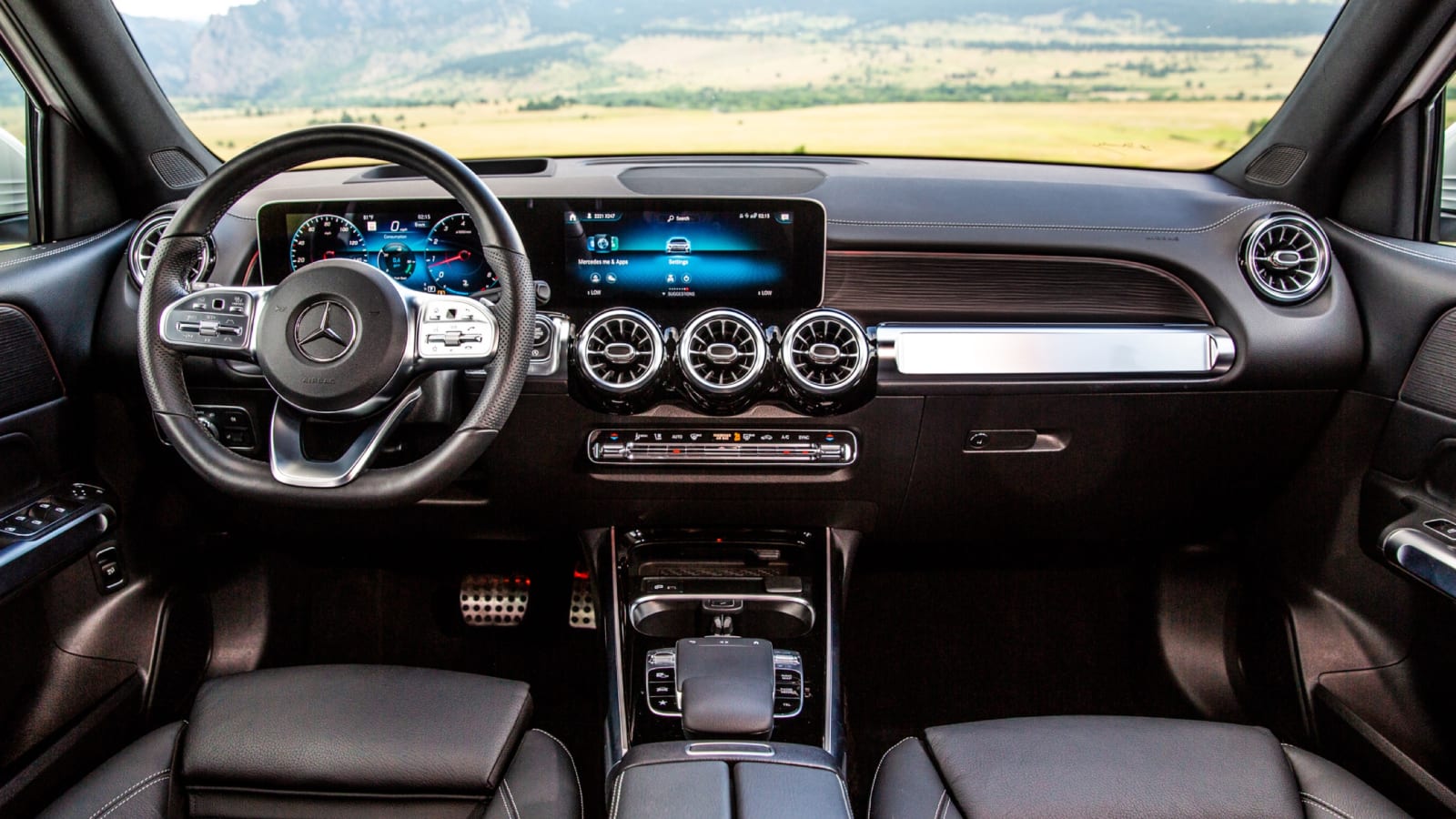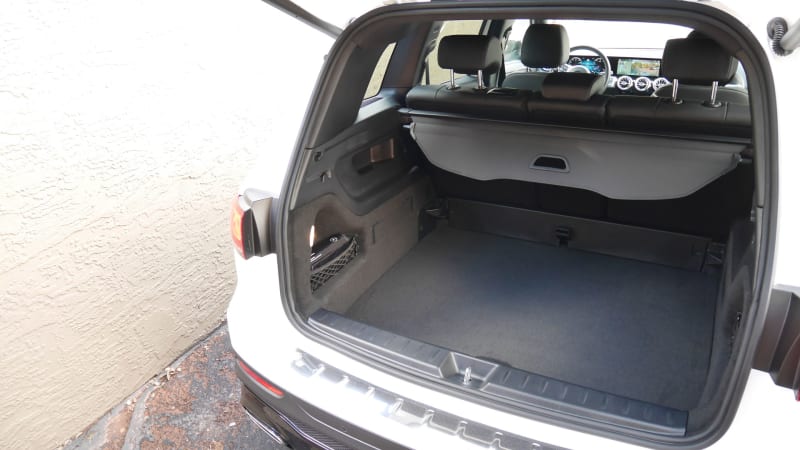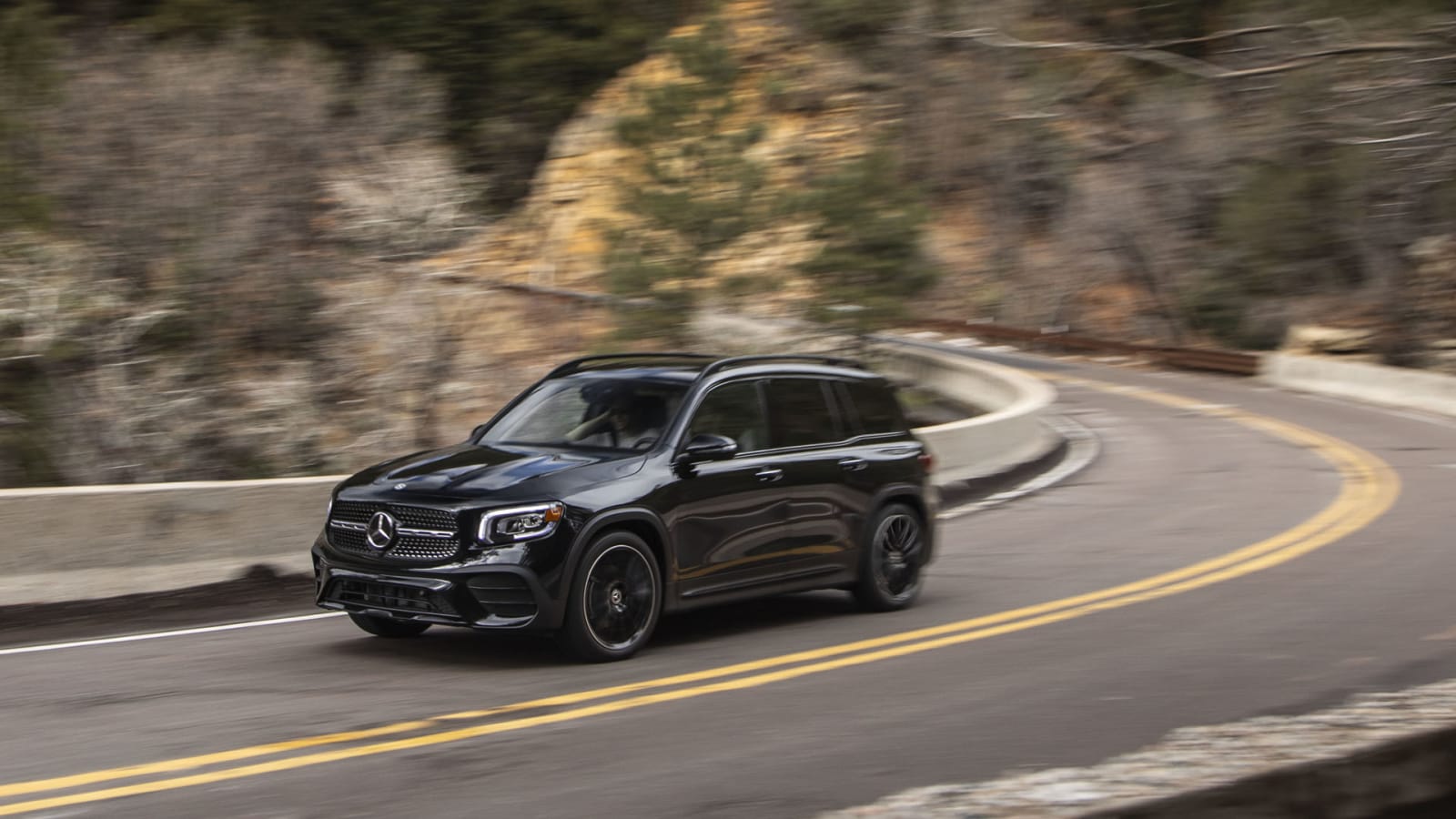2020 Mercedes-Benz GLB 250 First Drive | The real deal
https://ift.tt/36hUeAd
The previous-generation Mercedes CLA may have been a flawed car, but it was a success for its brand. At its sales peak, about 70% of buyers were new to Mercedes and of those, 65% traded their CLA in for another car with a three-pointed star. A similar trend is currently being seen with the new A-Class. Mercedes calls this growing collection of less-expensive compact vehicles “gateway” cars, and the new 2020 Mercedes-Benz GLB-Class is poised to throw the gates open even further.
The GLB rides on the same front-drive platform as the new A- and CLA classes as well as the next-generation GLA that arrives next year. But the GLB, with its 111.4-inch wheelbase and 182.4-inch overall length, stretches further than its stablemates as well as the BMW X1, Audi Q3 and Volvo XC40. Its back seat and cargo space are comparatively excellent as a result, benefitting from the GLB’s boxy shape.
That boxiness is certainly on trend at the moment, as can be seen in vehicles like the XC40, Kia Telluride and Mercedes’ own G-Class. There’s something charming about the little Benz box, although from certain angles (higher ones) and in certain configurations (the AMG Sport package), it can look a bit slammed, like a Kia Soul donning a fancy suit. The all-wheel-drive Mercedes GLB 250 4Matic includes an Off-Road Engineering package and a smidge more ground clearance that makes a subtle SUVish visual difference, but it doesn’t go far enough. Even if just for aesthetic purposes, it would be nice if there was a variant that’s even higher off the ground and more of a mini G-Wagen. A Jeep Renegade Trailhawk donning a fancy suit, if you will.

There are no such visual notes for the interior, which basically features a variation of the A-Class’ stylish and richly adorned design with some G-Class sprinkled in. The flat piece of metal across the passenger-side dash evokes the G’s grab handle, but sadly isn’t one. Meanwhile, the lower part of the dash is similarly forward and upright, creating an open environment. Just about everything you see and touch on the dash and doors is padded MBTex leatherette or soft-touch rubber, while hard plastic is relegated down low on the center console. All the switchgear is Mercedes’ finest, the rotary airvents look as slick as always, and the double-screen infotainment/instrument setup looks cool and expensive. The X1, Q3 and XC40 are quite obviously at the bottom of their ranges given the look and feel of their interiors – it’s not so obvious inside the GLB.
Digging deeper into that infotainment setup, a 7-inch screen is standard, while the 10.25-inch unit you see here is part of the $1,650 Premium package. All come with the MBUX tech interface, which proved to be much more intuitive than Mercedes’ previous-generation COMAND system, thanks to the large, responsive touchpad and a touchscreen with a more rational menu structure. The highly customizable color instrument display with multiple design templates is an example of how to do such a thing well, while the optional head-up display wows with its size and crisp color graphics (though there is a bit of head-scratching to change what’s displayed).
On the other hand, the natural speech recognition system basically didn’t work. It repeatedly failed to respond to the required “Hey Mercedes” engagement hail, while also repeatedly chiming in erroneously when we said something else in casual conversation, such as “the Four Seasons.” If it did respond as requested, it often failed to understand the direction. This has now been the case with multiple MBUX-equipped vehicles.


If the design, quality and technology get the GLB interior most of the way upfield against its competition, the dimensions take it into the end zone. There’s a whopping 62 cubic feet of maximum space, which outdoes the X1 (58.7), Q3 (48.0) and XC40 (47.2). It’s even greater than the GLC’s 56.5 cubic feet. Mercedes didn’t provide a total with the seats raised, but our eyeballs indicate the space is deeper, wider and taller than what you’d get in those competitors (especially the Q3). When it comes to cargo space, boxes are better. It’s also versatile, boasting both a two-tier load floor like the X1 (pictured above) and a sliding back seat like the Q3.
There’s so much space, in fact, that Mercedes even manages to offer a class-exclusive third-row-seat option that the company claims is large enough for someone 5-foot-6 to fit comfortably. Sadly, we couldn’t test that claim as no GLB’s were so-equipped at the press launch. Strange how Mercedes didn’t want pictures out there of tall automotive journalists contorted into a tiny third-row seat, eh?
Yet, its inclusion at least, speaks to the intention for the GLB to be more of a family-oriented small SUV than the current and upcoming GLA, which will once again be more of a raised compact hatchback better suited to singles and childless couples. To that end, the GLB’s back seat offers plenty of legroom courtesy the high-mounted seat, and abundant headroom even with the optional panoramic sunroof. It would be nice if the seat back offered a greater range of recline, though.


On paper, the GLB even has a bit more back seat leg- and headroom than the Mercedes GLC-Class, which has greater exterior dimensions and a higher price tag. So why pay extra for the GLC? Besides its arguably superior styling, the answer would be refinement. For as improved as the A-Class componentry has become, it does not match that of the rear-drive-based C-Class platform that underpins the GLC. As one example, the GLC’s traditional automatic provides smoother, more natural acceleration than the GLB, which features an eight-speed dual-clutch automated manual. It’s massively improved over the seven-speed dual clutch in the current GLA, a clunky, clueless thing prone to low-speed hesitation and jerkiness. Throttle response still isn’t as sharp as it can be – too mushy in Comfort mode, too twitchy in Sport – but it’s not the overt problem it was in prior applications.
Yet, even if the GLB can’t match its pricier sibling’s ride, handling and powertrain sophistication, nothing about its driving experience says “cheap”. It feels solid and it’s quiet. The ride quality is excellent, especially with the standard 18-inch wheels and $990 optional adjustable suspension (Comfort and Sport settings). The precise steering is consistently and appropriately weighted, road holding is commendable (perhaps a testament to it not being raised further off the ground), and we were genuinely surprised at how chuckable the little GLB is through corners. In short, it drives like a proper Mercedes.

Of course, part of that equation also includes the engine: the 2.0-liter turbocharged inline-four good for 221 horsepower and 258 pound-feet of torque that’s shared with the new CLA (the A-Class has a less-powerful 1.8-liter unit). Mercedes estimates a 0-60-mph time of 6.9 seconds for the all-wheel-drive GLB 250 4Matic. That output is effectively the same as the X1 and Q3, which curiously both produce 228 hp and 258 lb-ft. The Q3 is a tenth slower to 60 than the GLB; the X1 0.6 second quicker. Perhaps back-to-back drives would reveal some advantages one competitor has over the other in terms of response, sound or refinement, but on paper, flip a coin. What’s under the hood is unlikely to push someone toward or away from a GLB. Ditto the all-wheel-drive system.
Value is a more complicated story. The front-wheel-drive Mercedes-Benz GLB 250 starts at $37,595, including $995 for destination, while the GLB 250 4Matic goes for $39,595. That’s more than both the X1 ($36,195) and Q3 ($35,695), and while the GLB at least has more standard equipment than the BMW (LED headlights, driver inattention monitoring, sliding and reclining back seat, Android Auto, Apple CarPlay), it has less than the Audi Q3 (which gets leather upholstery, heated front seats and a panoramic sunroof standard). Given the GLB’s aesthetic and space advantages, this price premium seems fair. At the same time, you can also get more equipment on the GLB, which can elevate its price far beyond the others. Among those is the adaptive suspension, the third-row seat and a far more expansive array of safety and driving aides, which are very well executed. Even those with over-zealous nanny tendencies (the automatic speed-limit reduction for the adaptive cruise control, for instance) can be turned off. It’s pretty much the same stuff you can get on an S-Class.
In that way and many others, the 2020 Mercedes GLB is more than just a gateway to the brand. It’s a fully-fledged member and one that doesn’t constantly remind that you bought one of the cheapest Mercedes. Given the front-drive small-car platform and past experiences with the current GLA, we frankly weren’t expecting this to be so. Yet, with its ritzy interior, generous cargo space and refined driving experience, the GLB 250 is the real deal.
Auto Blog
via Autoblog https://ift.tt/1afPJWx
December 9, 2019 at 04:52PM